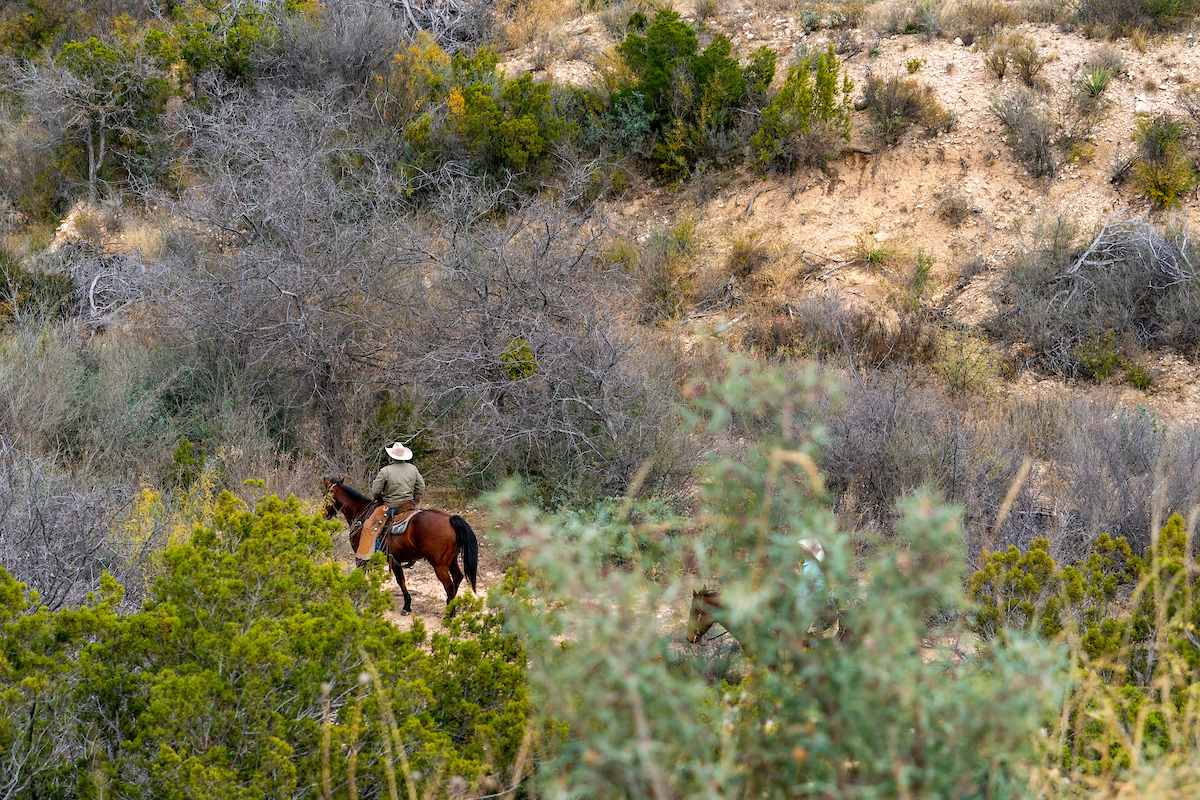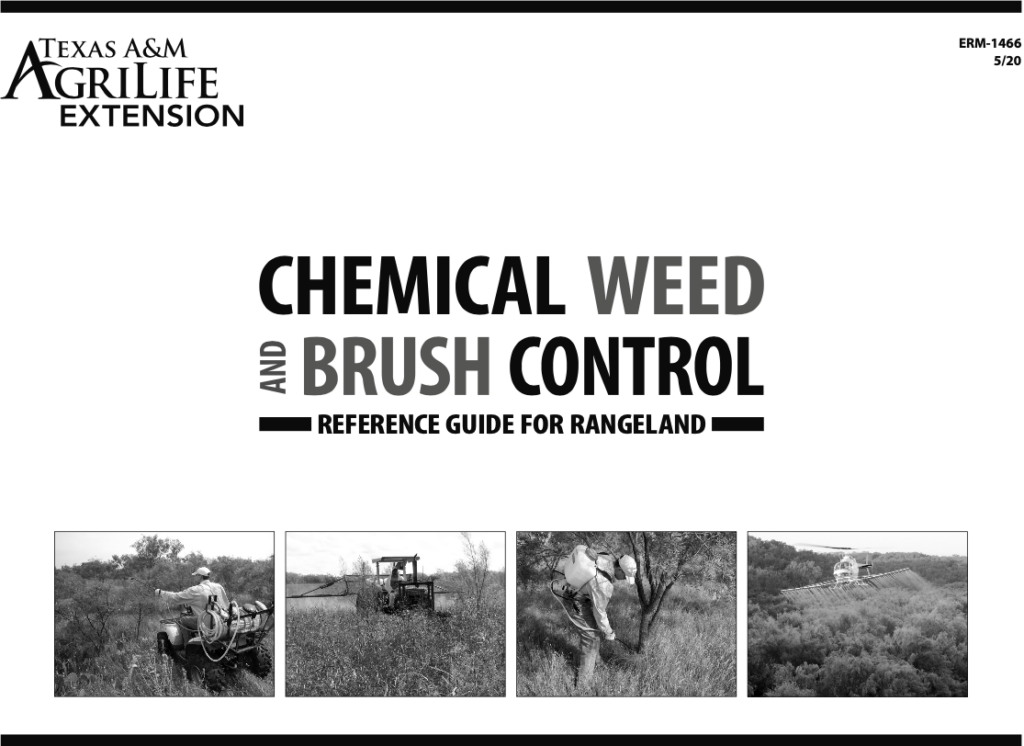
ERM-1466: Chemical Weed and Brush Control Reference Guide for Rangelands

The Texas A&M AgriLife Extension Service herbicide use committee documents past and current research related to the effectiveness of herbicides on potentially unwanted weed and brush species. These assessments are compiled in ERM-1466: Chemical Weed and Brush Control Reference Guide for Rangelands, which is often referred to as ERM-1466 or the 1466. ERM-1466 is based on scientific research and is for educational purposes only. It is not intended as a regulatory or opinion document.
Inclusion of an herbicide application in ERM-1466 should not be interpreted as a product endorsement on behalf of Texas A&M AgriLife Extension or members of the herbicide use committee.
Effectiveness ratings are only assigned when the submissions of herbicide treatment data are robust and reflect a suitable amount of data over space and time that can be easily replicated.
The effectiveness ratings are designated a Low (L: 0-35% plant kill); Moderate (M: 36-55% plant kill); High (H: 56-75% plant kill); or Very High (VH: 76-100% plant kill).
Using ERM-1466
Potential herbicide references for weed and brush species in the 1466 are listed by target weed or brush species in the Index found on page three. The second column on data pages include herbicide names. For a list of the product names these herbicides are typically sold as, please refer to page five.
It is recommended that herbicides are chosen based on the following considerations:
- Whether the user would like to make a broadcast application or treat individual plants (included in third and fourth columns).
- The effectiveness (L, M, H, VH), which tells you the percentage of plants you should expect to kill with that herbicide and rate. For percent kill ranges, see page four.
- How the chemical is applied. Reference the fifth column for the method to use, such as foliar, stem, cut-stump, aerial or other.
Detailed instructions on how to use ERM-1466 can be found on page two of the publication. Tips on measuring and mixing herbicides can be found on page six.
Data Submissions
Data can be submitted for inclusion in ERM-1466 by any group, including university researchers, industry, organizations and cooperatives who have collected accurate data including procedures that can be replicated.
Data submissions are reviewed, discussed and voted on by the Texas A&M AgriLife Extension herbicide use committee. Before collecting data for submission to ERM-1466, please carefully read the Guidelines for Data Submissions and become familiar with the submission form. Submissions and any questions may be directed to the Megan Clayton, Ph.D., Texas A&M AgriLife Extension herbicide use committee chair, at [email protected]. Please cc Parr Rosson, Ph.D., Texas A&M AgriLife Extension associate department head, Department of Rangeland, Wildlife and Fisheries Management at [email protected].
Members of the Texas A&M AgriLife Extension Herbicide Use Committee
- Megan Clayton, Ph.D., professor and AgriLife Extension range specialist, Uvalde
- Brittany Chesser, AgriLife Extension aquatic vegetation management program specialist
- Steven Evans, lecturer, Texas A&M Department of Rangeland, Wildlife and Fisheries Management
- Bill Fox, Ph.D., AgriLife Extension range specialist and director of the Center for Natural Resources Information Technology
- Jeff Goodwin, Ph.D., research assistant professor and director of the Center for Grazinglands and Ranch Management
- Stacy Hines, Ph.D., assistant professor and AgriLife Extension range specialist, Corpus Christi
- Charles Kneuper, Texas state rangeland management specialist, U.S. Department of Agriculture Natural Resources Conservation Service
- Barron Rector, Ph.D., associate professor and AgriLife Extension range specialist
- Larry Redmon, Ph.D., AgriLife Extension associate department head, Department of Soil and Crop Sciences
- Tim Steffens, Ph.D., associate professor and AgriLife Extension range specialist, Canyon
- Morgan Treadwell Ph.D., associate professor and AgriLife Extension range specialist, San Angelo
Rangeland, Wildlife & Fisheries Management Extension News
On AgriLife Today, the online archive for Texas A&M AgriLife and the College of Agriculture and Life Sciences, we provide news relating new and innovative research, academic programs, student experience, and Extension programming and outreach. We share news to improve lives, environments, scientific rigor and the Texas Economy. Read more department news on AgriLife Today.
Browse our Resources on AgriLife Learn
We develop top-tier educational content, materials, and multimedia including online courses and publications to help our stakeholders make informed decisions.